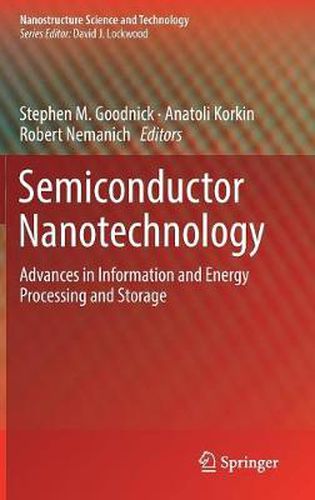Readings Newsletter
Become a Readings Member to make your shopping experience even easier.
Sign in or sign up for free!
You’re not far away from qualifying for FREE standard shipping within Australia
You’ve qualified for FREE standard shipping within Australia
The cart is loading…






This title is printed to order. This book may have been self-published. If so, we cannot guarantee the quality of the content. In the main most books will have gone through the editing process however some may not. We therefore suggest that you be aware of this before ordering this book. If in doubt check either the author or publisher’s details as we are unable to accept any returns unless they are faulty. Please contact us if you have any questions.
This book presents research dedicated to solving scientific and technological problems in many areas of electronics, photonics and renewable energy. Energy and information are interconnected and are essential elements for the development of human society. Transmission, processing and storage of information requires energy consumption, while the efficient use and access to new energy sources requires new information (ideas and expertise) and the design of novel systems such as photovoltaic devices, fuel cells and batteries. Semiconductor physics creates the knowledge base for the development of information (computers, cell phones, etc.) and energy (photovoltaic) technologies. The exchange of ideas and expertise between these two technologies is critical and expands beyond semiconductors. Continued progress in information and renewable energy technologies requires miniaturization of devices and reduction of costs, energy and material consumption. The latest generation of electronic devices is now approaching nanometer scale dimensions, new materials are being introduced into electronics manufacturing at an unprecedented rate, and alternative technologies to mainstream CMOS are evolving. Nanotechnology is widely accepted as a source of potential solutions in securing future progress for information and energy technologies. Semiconductor Nanotechnology features chapters that cover the following areas: atomic scale materials design, bio- and molecular electronics, high frequency electronics, fabrication of nanodevices, magnetic materials and spintronics, materials and processes for integrated and subwave optoelectronics, nanoCMOS, new materials for FETs and other devices, nanoelectronics system architecture, nano optics and lasers, non-silicon materials and devices, chemical and biosensors, quantum effects in devices, nano science and technology applications in the development of novel solar energy devices, and fuel cells and batteries.
$9.00 standard shipping within Australia
FREE standard shipping within Australia for orders over $100.00
Express & International shipping calculated at checkout
This title is printed to order. This book may have been self-published. If so, we cannot guarantee the quality of the content. In the main most books will have gone through the editing process however some may not. We therefore suggest that you be aware of this before ordering this book. If in doubt check either the author or publisher’s details as we are unable to accept any returns unless they are faulty. Please contact us if you have any questions.
This book presents research dedicated to solving scientific and technological problems in many areas of electronics, photonics and renewable energy. Energy and information are interconnected and are essential elements for the development of human society. Transmission, processing and storage of information requires energy consumption, while the efficient use and access to new energy sources requires new information (ideas and expertise) and the design of novel systems such as photovoltaic devices, fuel cells and batteries. Semiconductor physics creates the knowledge base for the development of information (computers, cell phones, etc.) and energy (photovoltaic) technologies. The exchange of ideas and expertise between these two technologies is critical and expands beyond semiconductors. Continued progress in information and renewable energy technologies requires miniaturization of devices and reduction of costs, energy and material consumption. The latest generation of electronic devices is now approaching nanometer scale dimensions, new materials are being introduced into electronics manufacturing at an unprecedented rate, and alternative technologies to mainstream CMOS are evolving. Nanotechnology is widely accepted as a source of potential solutions in securing future progress for information and energy technologies. Semiconductor Nanotechnology features chapters that cover the following areas: atomic scale materials design, bio- and molecular electronics, high frequency electronics, fabrication of nanodevices, magnetic materials and spintronics, materials and processes for integrated and subwave optoelectronics, nanoCMOS, new materials for FETs and other devices, nanoelectronics system architecture, nano optics and lasers, non-silicon materials and devices, chemical and biosensors, quantum effects in devices, nano science and technology applications in the development of novel solar energy devices, and fuel cells and batteries.